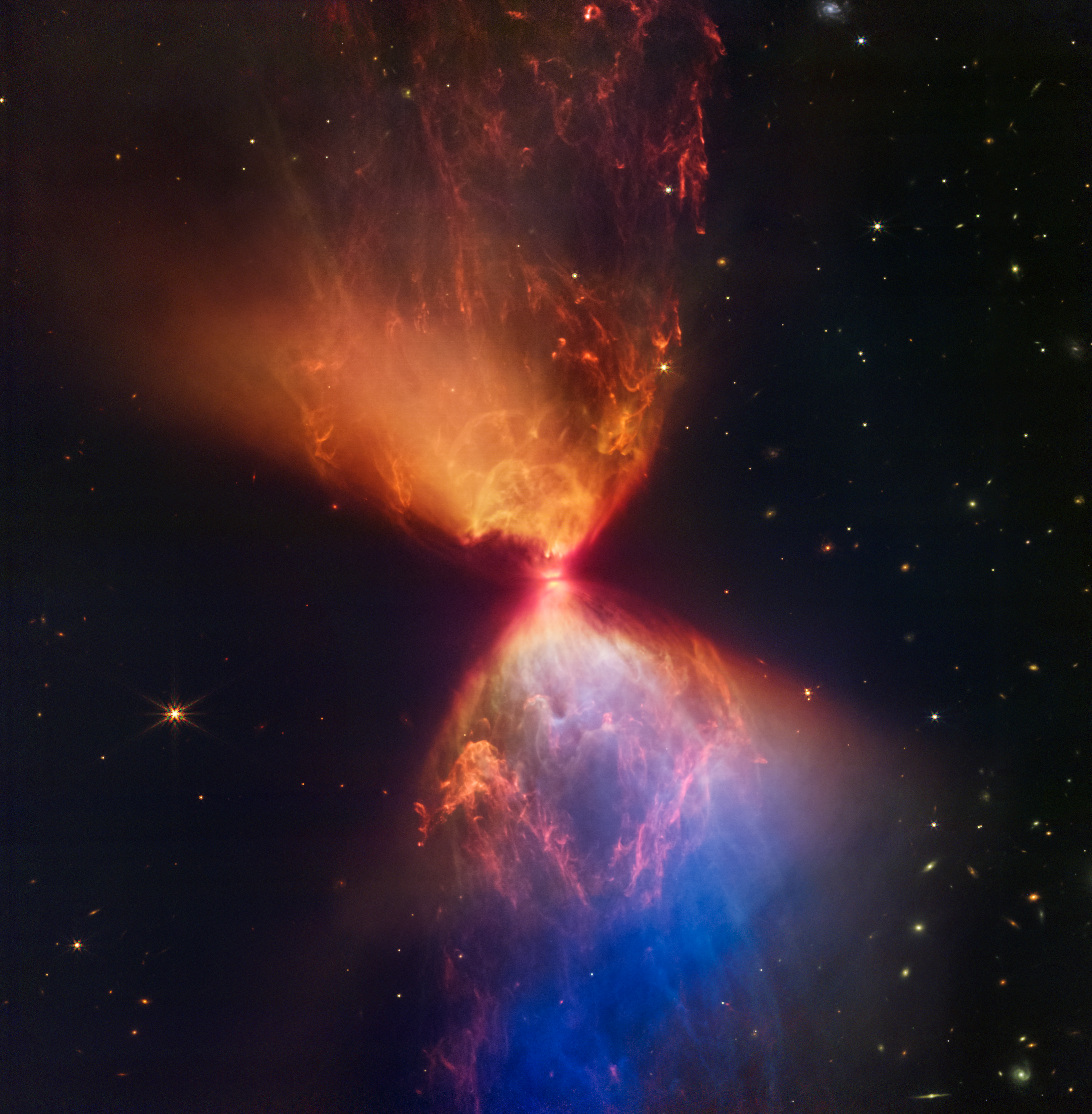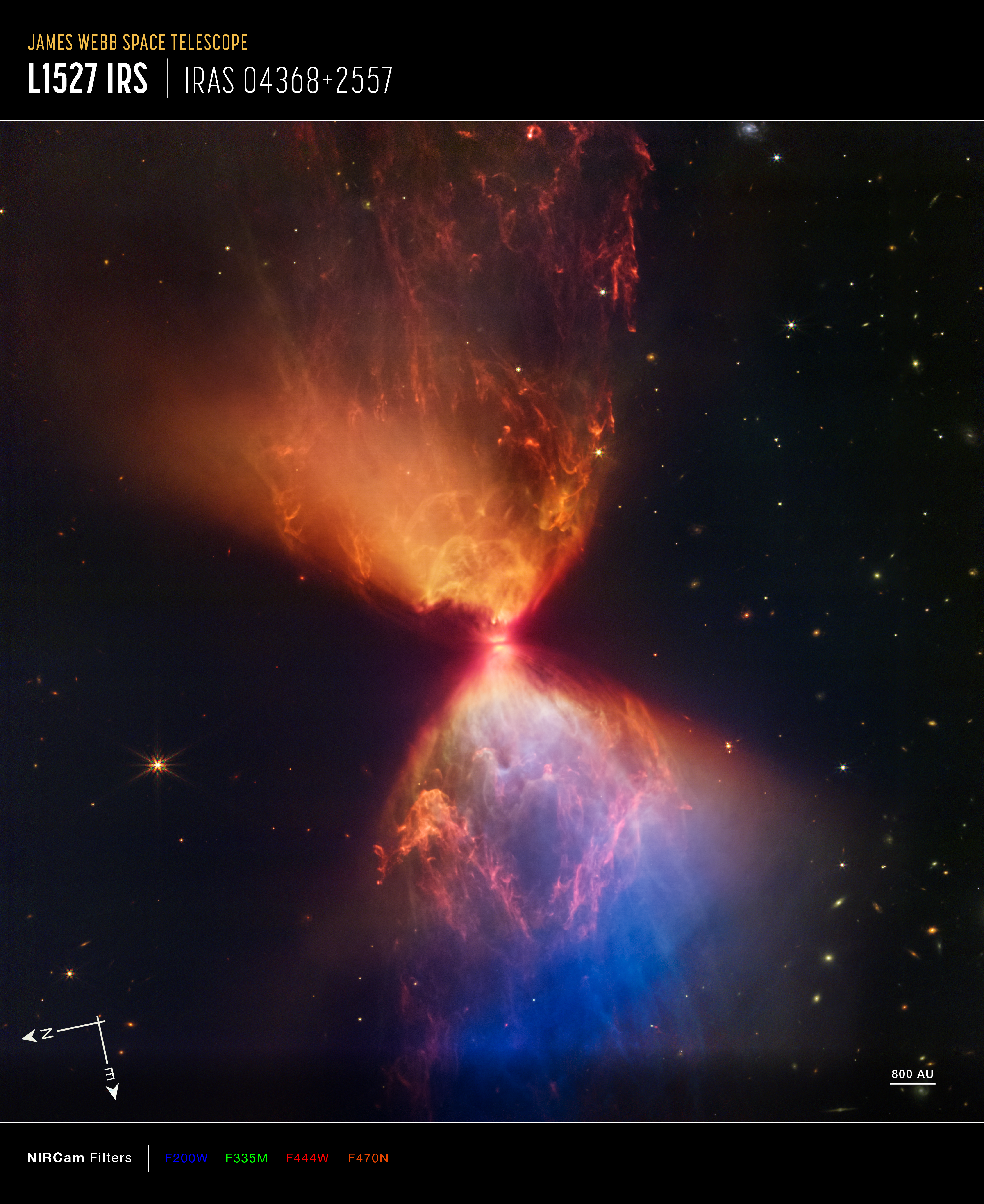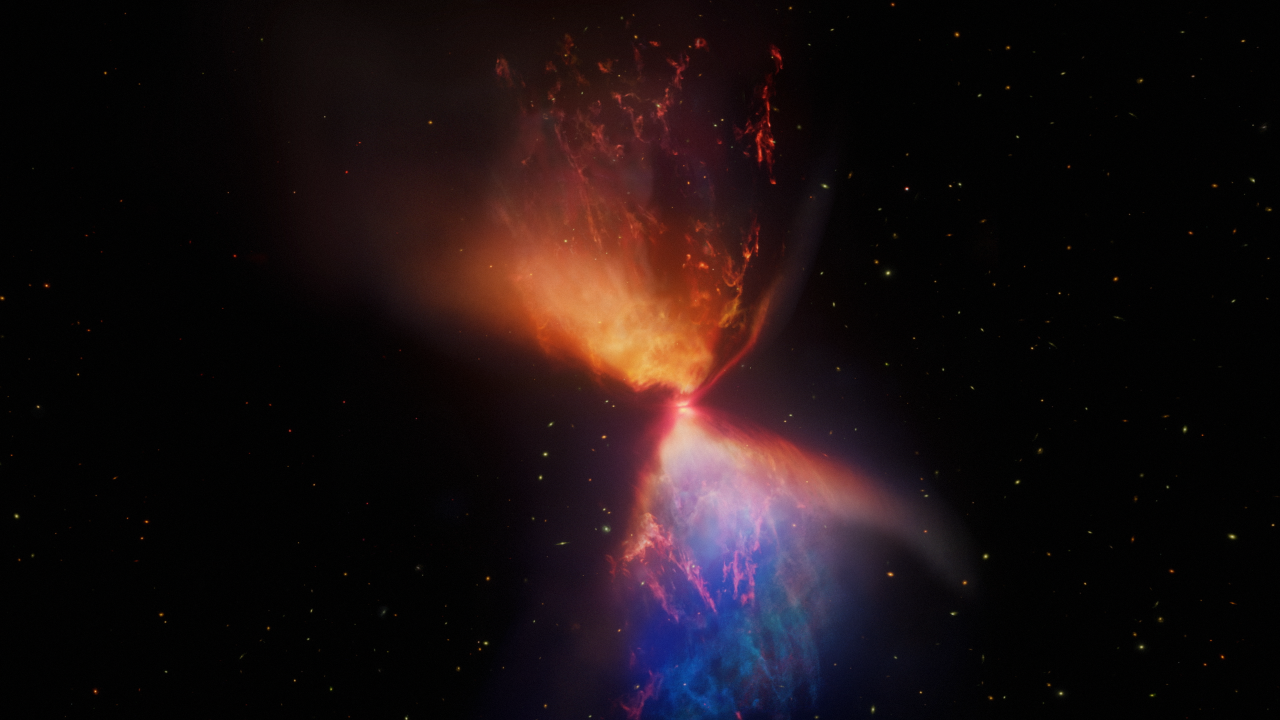1 min read
L1527 and Protostar (NIRCam Image)

The protostar within the dark cloud L1527, shown in this image from NASA’s James Webb Space Telescope Near-Infrared Camera (NIRCam), is embedded within a cloud of material feeding its growth. Ejections from the star have cleared out cavities above and below it, whose boundaries glow orange and blue in this infrared view. The upper central region displays bubble-like shapes due to stellar “burps,” or sporadic ejections. Webb also detects filaments made of molecular hydrogen that has been shocked by past stellar ejections. The edges of the cavities at upper left and lower right appear straight, while the boundaries at upper right and lower left are curved. The region at lower right appears blue, as there’s less dust between it and Webb than the orange regions above it.
About the Object
- R.A. PositionR.A. PositionRight ascension – analogous to longitude – is one component of an object's position.04:39:53.59
- Dec. PositionDec. PositionDeclination – analogous to latitude – is one component of an object's position.+26:03:05.50
- ConstellationConstellationOne of 88 recognized regions of the celestial sphere in which the object appears.Taurus
- DistanceDistanceThe physical distance from Earth to the astronomical object. Distances within our solar system are usually measured in Astronomical Units (AU). Distances between stars are usually measured in light-years. Interstellar distances can also be measured in parsecs.About 460 light-years
- DimensionsDimensionsThe physical size of the object or the apparent angle it subtends on the sky.Image is 2.2 arcmin across (about 0.3 light-years)
About the Data
- Data DescriptionData DescriptionProposal: A description of the observations, their scientific justification, and the links to the data available in the science archive.
Science Team: The astronomers who planned the observations and analyzed the data. "PI" refers to the Principal Investigator.This image was created from JWST data from proposal: 2739 (K. Pontoppidan)
- InstrumentInstrumentThe science instrument used to produce the data.JWST>NIRCam
- Exposure DatesExposure DatesThe date(s) that the telescope made its observations and the total exposure time.08 Sep 2022
- FiltersFiltersThe camera filters that were used in the science observations.F200W, F335M, F444W, F470N
- Object NameObject NameA name or catalog number that astronomers use to identify an astronomical object.L1527 IRS (IRAS 04368+2557)
- Object DescriptionObject DescriptionThe type of astronomical object.Young Stellar Object
- Release DateNovember 16, 2022
- Science ReleaseNASA’s Webb Catches Fiery Hourglass as New Star Forms
- CreditNASA, ESA, CSA, STScI; Image Processing: Joseph DePasquale (STScI), Alyssa Pagan (STScI), Anton Koekemoer (STScI)

These images are a composite of separate exposures acquired by the James Webb Space Telescope using the NIRCam instrument. Several filters were used to sample different infrared wavelength ranges. The color results from assigning different hues (colors) to each monochromatic (grayscale) image associated with an individual filter. In this case, the assigned colors are: Blue: F200W, Green: F335M, Red: F444W, Orange: F470N

Related Images & Videos

L1527 and Protostar (NIRCam Compass Image)
This image of the nebula L1527, captured by Webb’s Near-Infrared Camera (NIRCam), shows compass arrows, scale bar, and color key for reference. The north and east compass arrows show the orientation of the image on the sky. Note that the relationship between north and east on...

Webb Reveals the Protostar L1527 IRS
Explore the formation of a star as can only be seen by the Webb Space Telescope. This 3D visualization exposes the structures around the protostar L1527 IRS. Even with the best optical telescopes, the nebula L1527 appears as a dark, featureless cloud. But it contains a secret...
Share
Details
Laura Betz
NASA’s Goddard Space Flight Center
Greenbelt, Maryland
laura.e.betz@nasa.gov
NASA, ESA, CSA, STScI
Joseph DePasquale (STScI), Alyssa Pagan (STScI), Anton Koekemoer (STScI)






























